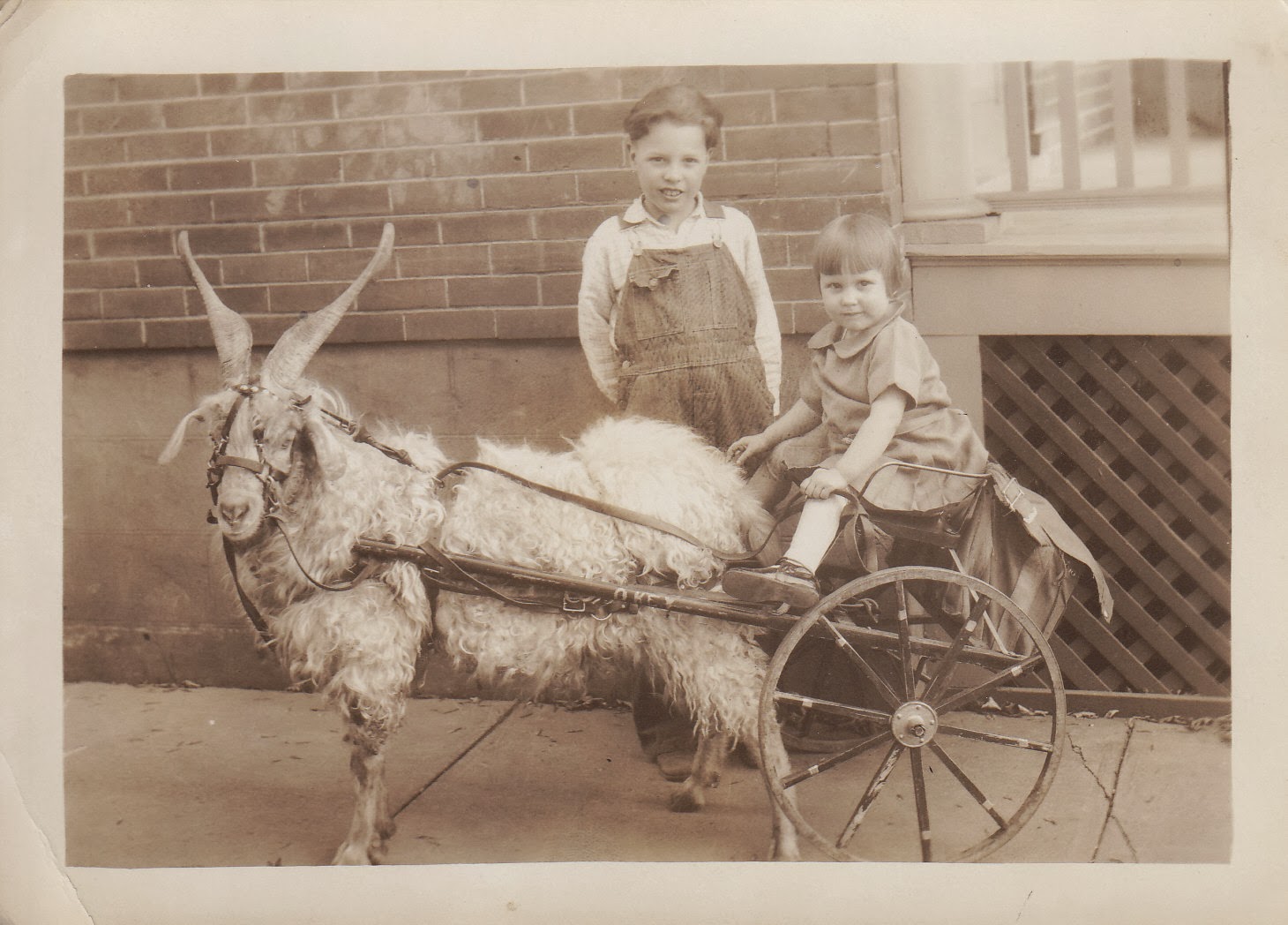 Joseph Samuel Marrom, my husband's maternal grandfather, is our most stubborn research brick wall. While we have located several cousins, filled in family members for his children and visited his grave, we have been unable to document his parents, the names of relatives he may have lived with in New York City and Chicago after his emigration to the United States or discover the name(s) of half brothers or sisters that emigrated to South Africa. The timeline below spotlights what we know and what we have discovered about Grandpa Marrom.
Joseph Samuel Marrom, my husband's maternal grandfather, is our most stubborn research brick wall. While we have located several cousins, filled in family members for his children and visited his grave, we have been unable to document his parents, the names of relatives he may have lived with in New York City and Chicago after his emigration to the United States or discover the name(s) of half brothers or sisters that emigrated to South Africa. The timeline below spotlights what we know and what we have discovered about Grandpa Marrom.
- January 2, 1874: Joseph is born to Samuel and Esther Marrom. His birthplace is either Tilsit, East Prussia as stated by his son William Lionel Marrom or Tauroggen, Russia as stated on his naturalization paper. Tilsit and Tauroggen are both located in the Baltic. East Prussia was a province of Germany and Joseph's parents are listed as being born in Germany in the 1900, 1910, 1920 and 1930 US Censuses. Tilsit located on the Lithuanian - Russian border became Sovetsk, Russia after 1946. Tauroggen is now Taurage, Lithuania. This birth date was stated by Joseph on his World War I Draft Registration Card.
- Esther passes away while Joseph is still a baby. Samuel remarries and has several more children. Lionel remembered his father receiving a letter from a half-brother who lived in Capetown, South Africa. The half-brother spelled his name "Meram." When Lionel asked about the difference in spelling, his father explained the family in the United States felt the spelling of Marrom looked better. In an effort to locate Merams in South Africa, we searched available South Africa directories. Finding no Merams, we mailed letters to the Marams we found. While this led to finding a family that had emigrated from Lithuania and had ties to the United States, we could not make positive connections.
- Family story indicated Samuel operated a hotel in Tilsit.
- About 1886 (best estimated from family stories). Joseph left his home for the United States. The family story claims he traveled alone (he was 12 or 16 if one uses the age he claimed when he joined the US Army) and stayed with relatives in New York and then Chicago when he arrived. No names of these relatives have survived. In searching indexes and censuses, I have identified a few potential names but have not been able to confirm or located surviving family members to establish communication.
- November 7, 1891: Joseph enlists under the Sam Marrom in the United States Army in Milwaukee, Wisconsin. He states his age as 21 years, one month. He is described as 5 feet 5 1/2 inches tall with dark brown eyes and hair. In addition it was noted that he three vaccinations in each arm with a scar over his left eye and a scar on his right knee. He served in the army for a period of five years.
- April 21, 1896: Joseph marries Annie Selk in Paris, Idaho. Paris is near Bear Lake. (Idaho, Marriages, 1878-1898; 1903-1942, FHL microfilm 1450967)
- December 21, 1896: son, William Lionel Marrom, is born in Dingle, Bear Lake, Idaho.
- May 30, 1899: daughter, Norma Marrom, is born in Montpelier, Bear Lake, Idaho.
- July 18, 1901: son, Howard Marrom, is born in Montpelier, Bear Lake, Idaho.
- August 8, 1902: Joseph receives his Certificate of Naturalization in the Fifth Judicial District Court in Bear Lake County. In this document, Joseph renounces allegiance to the Czar of Russia.
- 1903: Joseph starts the Eagle Clothing Store in Preston, Idaho.
- March 30, 1904: daughter, Grace Marrom, is born in Blackfoot, Bingham, Idaho.
- April 26, 1906: son, Clifford Stanley Marrom, is born in Preston, Franklin, Idaho.
- September 23, 1910: son, Nathan Aaron Hawley Marrom, is born in Preston, Franklin, Idaho.
- 1912: Joseph enters politics and is elected to serve as a City Councilman for Preston.
- October 15, 1913: daughter, Alice Marrom, is born in Preston.
- February 14, 1915: daughter, Esther Kay Marrom, is born in Preston.
- 1919 - 1921: Joseph serves as Mayor of Preston.
- May 1, 1924: daughter, Beverly Ann Marrom, is born in Preston.
- 1930: Joseph and family still at home move to Salt Lake City.
- July 16, 1935: Beverly dies in Salt Lake City.
- October 1937: Joseph suffers a stroke.
- December 1, 1937: Joseph dies of pneumonia.
In our efforts to discover more information on Joseph's ancestors we started a blog, Marrom Quest, several years ago. If you are interested in additional information on our quest, visit http://marromquest.blogspot.com/
















































